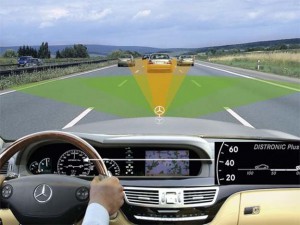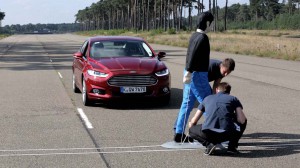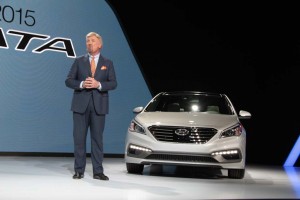New active safety systems, such as forward collision warning and emergency auto-braking, are having a major impact on the number of accidents, injuries and fatalities, according to police reports from the U.S.
According to a deep dive conducted by the Insurance Institute for Highway Safety, automatic braking systems yield a 40% reduction in rear-end crashes, while collision warning systems alone have cut the collision rate by 23%. The IIHS study estimates that if all vehicles on the road were equipped with these technologies, that would have prevented about 700,000 police-reported rear-end crashes in 2013.
“The success of front crash prevention represents a big step toward safer roads,” says David Zuby, IIHS chief research officer. “As this technology becomes more widespread, we can expect to see noticeably fewer rear-end crashes. The same goes for the whiplash injuries that often result from these crashes and can cause a lot of pain and lost productivity.”
After initially questioning both the benefits and the potential cost of making such systems widely available, the auto industry is rapidly shifting course. Both collision warning and auto braking technology are showing up on a broader array of new models each year – either as standard or optional gear.
Meanwhile, a consortium of 10 major automakers, including industry giants General Motors, Volkswagen and Toyota, are expected to announce agreement on plans to make these technologies standard across their full product line-ups in the U.S.
The unusual approach was encouraged by federal regulators who believe the industry can act faster than would be possible through the normally government rule-making process. In turn, those automakers not participating in the consortium will feel pressure to make similar moves, Mark Rosekind, the administrator of the National Highway Traffic Safety Administration, told TheDetroitBureau.com earlier this month.
“At Hyundai, we’re big believes in democratizing technology,” Dave Zuchowski, CEO of Hyundai Motor America, told TheDetroitBureau.com. One approach, introduced on the recently updated BMW 7-Series sedan, allows the vehicle to steer around an obstacle to avoid a crash.
The more such technologies advance and go mainstream, “you’re going to avoid accidents, and avoid injuries and avoid deaths,” said Zuchowski.
(With another death reported, Takata airbag recall is expanded by millions. Click Here for more.)
The Korean carmaker is among those planning to roll out collision warning and auto-braking systems across its line-up, and Zuchowski said Hyundai is already looking at even more advanced technologies, such as
The new IIHS study is the latest to reveal the safety benefits from forward-looking crash systems. It looked at police-reported crashes in 22 states between 2010 and 2014 that involved vehicles from five manufacturers – Acura, Honda, Mercedes-Benz and Subaru – with optional or standard forward crash prevention systems.
The more comprehensive the technology, the lower the number of rear-end crashes. But even the most basic forward collision warning systems delivered noticeable improvements in safety, according to the IIHS study. Volvo, which was one of the first to introduce such technology under the propriety name, City Safety, had the biggest reduction in rear-end crashes, 54% less than comparable vehicles without the system.
None of the forward collision systems was foolproof, but, “Even when a crash isn’t avoided, systems that have autobrake have a good chance of preventing injuries by reducing the impact speed,” noted Jessica Cicchino, the study’s author and the Institute’s vice president for research.
(Safety-related recalls hit all-time record in 2015. Click Here for that breaking story.)
The collision warning consortium is expected to announce plans within the next few weeks. The unusual, industry-government approach is serving as a template for a broader safety effort announced on January 15th, teaming NHTSA and 18 automakers. The goal is to foster the development of other advanced safety technologies and get them into production as quickly as possible.
(Fore more on the new consortium’s goals, Click Here.)
NHTSA chief Rosekind says the agency has set a goal of achieving zero deaths on U.S. roads in the not-too-distance future. In 2014, the latest year for which full data is available, 32,000 Americans were killed in car crashes. Many safety experts believe the real breakthrough will come early in the coming decade when the first autonomous vehicles go on sale. But the new IIHS study suggests significant improvements will be possible before then.



